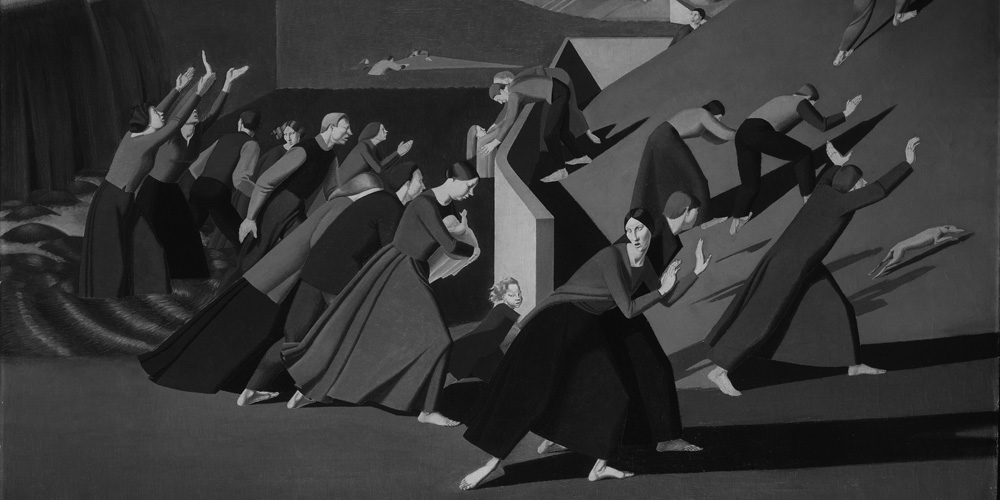A leading light
There are only a few days left to catch the intriguing show at Dulwich Picture Gallery showcasing the work of a forgotten star of British painting in the 1920s. Winifred Knights was the first British woman to win the Prix...
There are only a few days left to catch the intriguing show at Dulwich Picture Gallery showcasing the work of a forgotten star of British painting in the 1920s. Winifred Knights was the first British woman to win the Prix de Rome scholarship thanks to her monumental painting The Deluge. The work was hailed by a national newspaper at the time as a ‘work of genius’ and the British School at Rome called Knights one of the outstanding artists of her generation. But her output dropped in later years and she died, aged just 48, in relative obscurity.
The show at Dulwich gives a wonderful introduction to Knights’ work. Glowing and somehow other-worldly, her paintings were influenced by the traditions of the early Italian Renaissance. Yet they often drew on very modern themes, including women’s rights, industrialisation and 20th century warfare. And much of the credit for that goes to one of the leading lights of the Fabians in the early part of the century: Knights’ aunt, Millicent Murby.
Murby, said to have been a huge influence on Knights and her artistic and political development, was a leading light in the Fabians in the early part of the century. She served on the executive committee in the years before the first world war and was an early driving force, and treasurer, of the Fabian Women’s Group. According to an account in Patricia Pugh’s Educate, Agitate, Organise: 100 years of Fabian Socialism, Murby and her fellow women on the executive found they had less influence than they had hoped for and so “decided not to wait for the main society to act but to carry out the required educational, investigative and propaganda work on women’s social and political rights without the help of the men”.
Murby’s contribution included editing the reports of the Fabian board of studies, designed to investigate – and dispel – many of the beliefs about women’s supposed incapacity to carry out the same roles as men. According to Pugh, she took a while to find her feet – in her first lecture to the whole society on the ‘woman question’, we are told that “statistics were muddled, illustrations trite and the argument, based on ill-founded though common assumptions, was inconclusive”.
Yet we can perhaps get a better measure of Murby, and her willingness to push against contemporary attitudes, from a letter to the Spectator published after the Titanic disaster in 1912. Murby, the somewhat unimpressed correspondent wrote, had addressed Cambridge University’s Fabian Society questioning the ‘women and children first’ approach to the rescue. “Women are beginning to realise that we have got to consider very carefully whether it is worthwhile that the weak should always be saved and the strong allowed to go down,” she is reported to have said. “It will be difficult to get men to relinquish their heroic ideals. But women must realise that it is necessary for them to stand by.”
Beyond her political activities, Murby, a civil servant by day, had a fascinating sideline as an amateur thespian. Most notably, she was the first in Britain to play the title role in Oscar Wilde’s Salome, at a time when professional productions of the work were banned and she also took on parts in fellow Fabian George Bernard Shaw’s Candida and The Philanderer.
It’s this mix of theatricality, risk-taking and activism, of a woman who isn’t prepared to sit on the sidelines, that’s so fascinating to trace in the work of her artist niece. We see it in much of Knights’ subject matter, particularly women streaming out of the factory after a day at work in Leaving the munitions works, or women mill workers painted engaging with Murby in her campaigning role in A scene in a village street, with mill hands conversing. But it’s also there in the more allegorical works, where Knights often paints herself into the picture: the woman artist refusing to leave the stage.
Winifred Knights, Dulwich Picture Gallery, London until 18 September
Images: Winifred Knights, Portrait of Millicent Murby, September 1917; Winifred Knights, Leaving the Munition Works, 1919; Winifred Knights, A Scene in a Village Street with Mill-hands Conversing, 1919. All images: © The Estate of Winifred Knights



